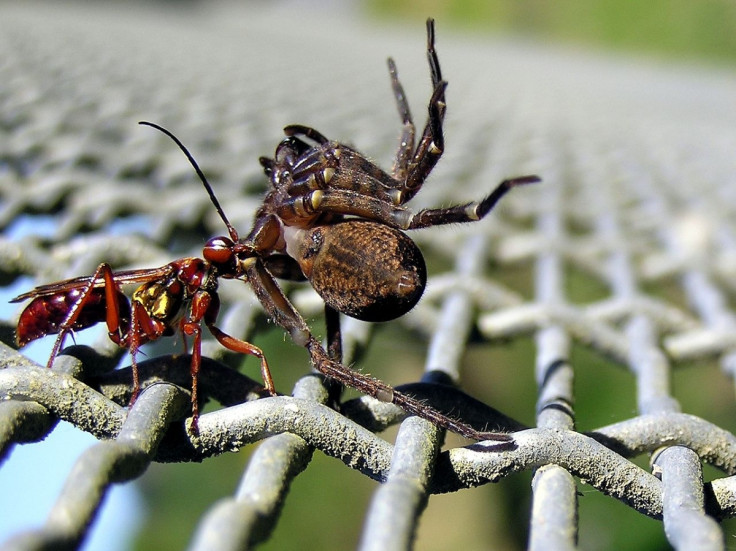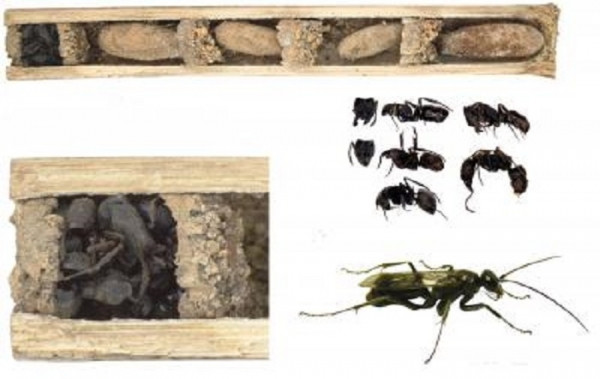Spider-Eating Bone-house Wasp 'Deuteragenia Ossarium' Uses Ant Corpses to Ward Off Nest Predators

A new wasp species uses the bodies of dead ants to protect its nest, researchers have found.
The so-called Bone-house wasp, Deuteragenia ossarium, employs the chemical signals of the insect corpses to ward off predators by stuffing them into crevices on the outside of the nest.
The new species of wasp, which preys on spiders, was discovered in Jiangxi Province in south east China.
According to researchers from the University of Freiburg, the behaviour is unique in the animal kingdom. The wasp is named after historical ossuaries, known as bone-yards, which are filled with human skeletons found in monasteries or graveyards.
"It was a totally unexpected discovery," lead researcher Michael Staab told Live Science.
Wasps use various strategies to protect their nests, including digging holes or moving into pre-existing cavities in wood. Staab's team set up artificial nests, consisting of hollow canes strapped to a post.
Female spider wasps, a combination of 18 different species from south east China, were seen to drag a paralysed spider into the end of the cane, lay an egg on it and seal it off with resin, soil and plant material. The wasp then returns with another spider and repeats the process until the tube is filled with separate "brood cells".

The wasp's offspring eat their way out of the spider alive when they hatch and exit the cells by chewing through the resin.
This pattern was common, but in 72 of the 829 nests, the nests contained up to 13 dead ants.
When the larvae hatched, Staab discovered all the wasps belonged to the same species, which taxonomists identified as a new species.
The Bone-house wasp that emerged was black and a half-inch long with a golden mark on its face. Although part of the Deuteragenia group, it is only one of 50 species that uses ants in their nests.
The researchers discovered a lower parasitism rate in the Bone-house nests than in those of wasp species that do not use ant bodies. This suggested nests containing ants were less vulnerable to potential enemies due to the chemical cues coming from the dead ants.
"Our discovery demonstrates in an impressive way, what fascinating strategies of offspring-protection have evolved in the animal kingdom," Staab said.
The process of retrieving the ants, however, is difficult for the wasps.
"Most of the ant specimens belong to a big ant species with a powerful sting. So the female wasp has a certain risk of getting injured or killed," Staab told Reuters.
Other species of wasps also have macabre nesting practices. The parasitic wasp Dinocampus coccinellae injects a ladybird with its larvae, according to Nature World News.
The research was published in the journal PLOS One.
© Copyright IBTimes 2024. All rights reserved.























